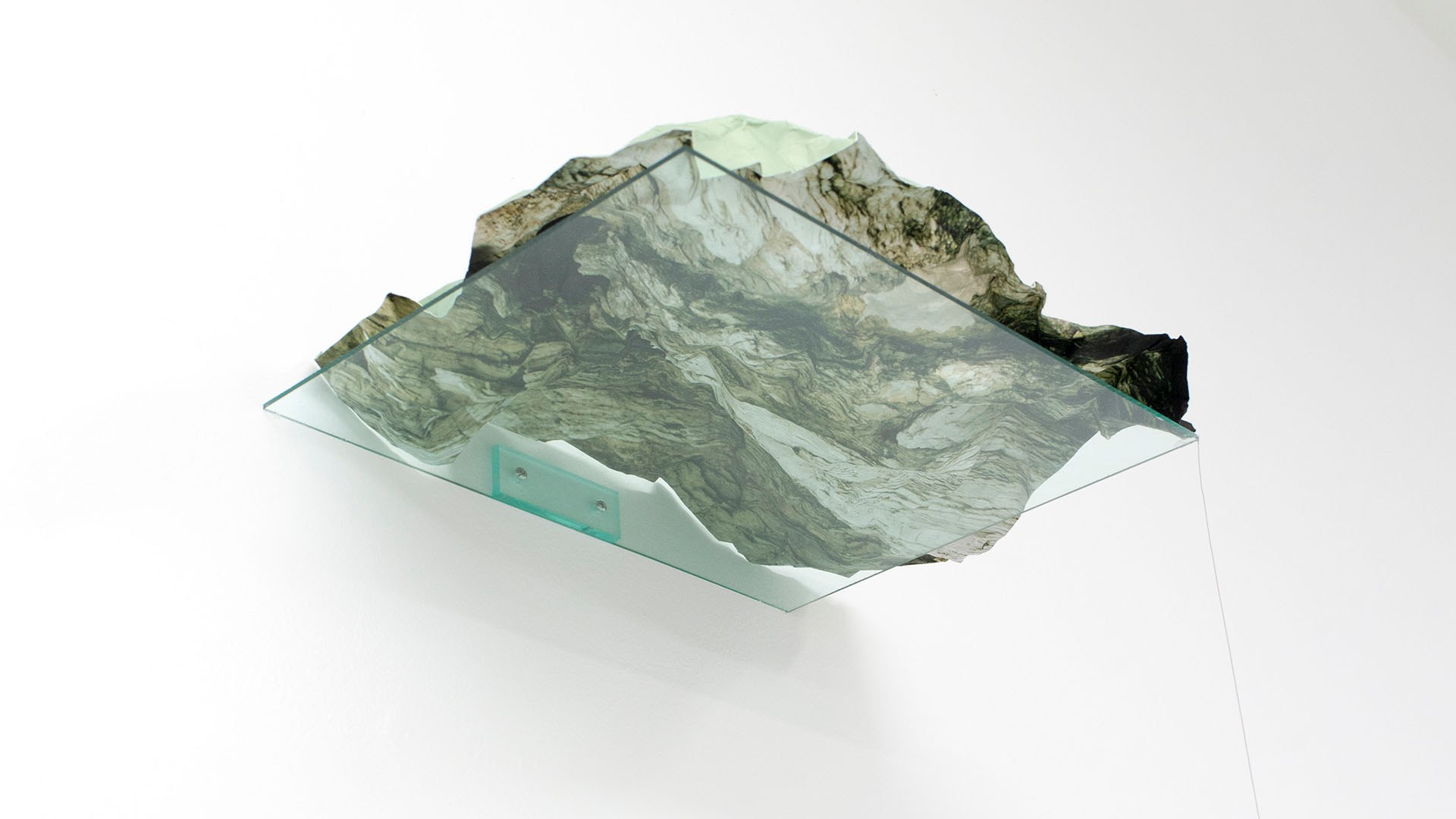
The Homeland Issue
Land’s End
SHOWCASING THE PHOTOGRAPHIC WORKS OF ALEX KWOK
Interactions between the tectonic boundaries of oceanic and continental crusts have produced some of the most dramatic landscapes on Earth: volcanoes, trenches, mountain ranges, monstrous seaside cliffs that seemingly rise straight from the ocean. Photographer Alex Kwok explores these spaces of cataclysm in his 2017 photography series Land’s End, printing photographs of sea-side geology on rice paper, which he has hand-soaked and crumpled in the same seawater of the location where it was taken. The pieces are then allowed to dry and unfurl organically according to the specific material tensions inherent in the medium, recalling the erosive formation of actual coastlines.
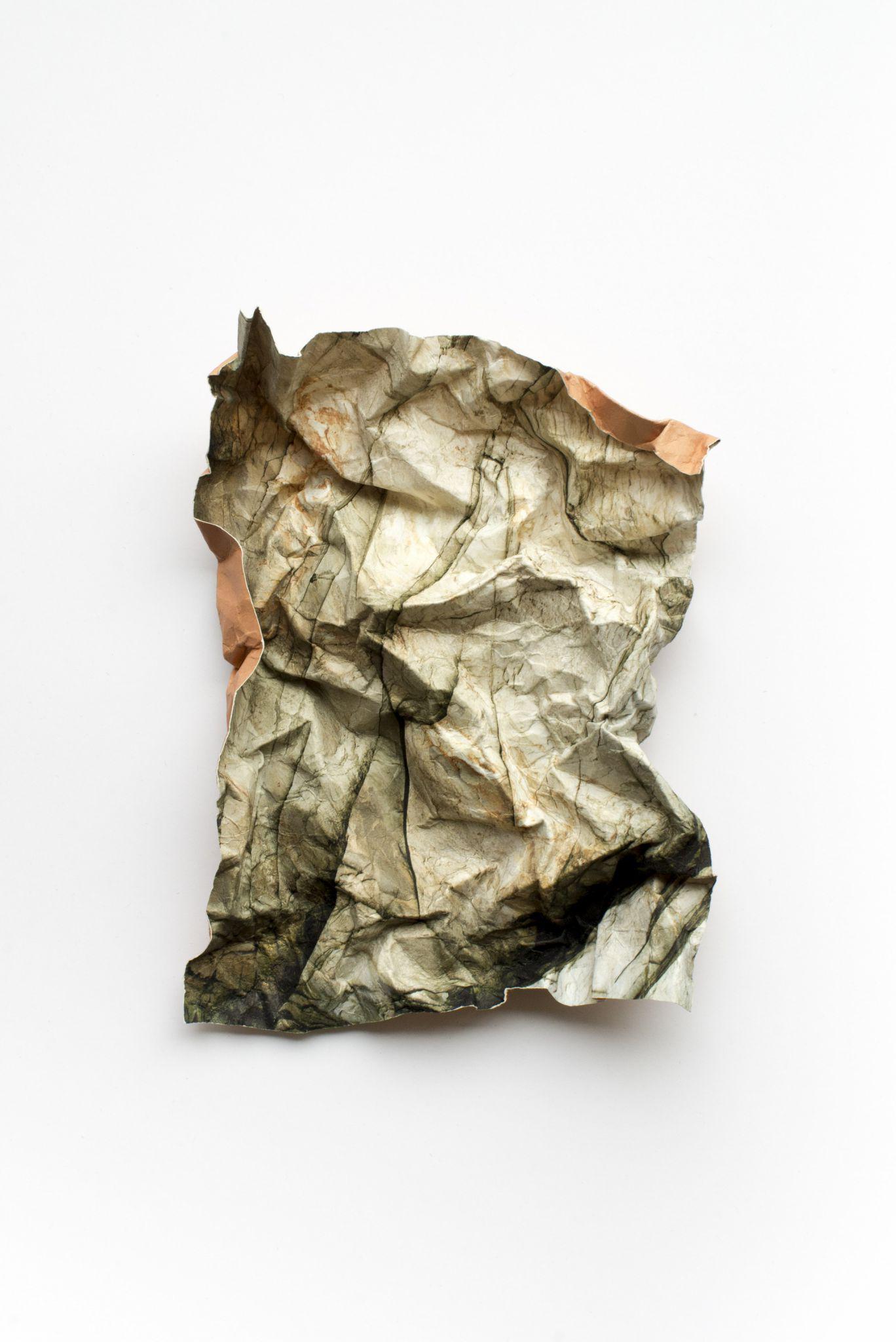
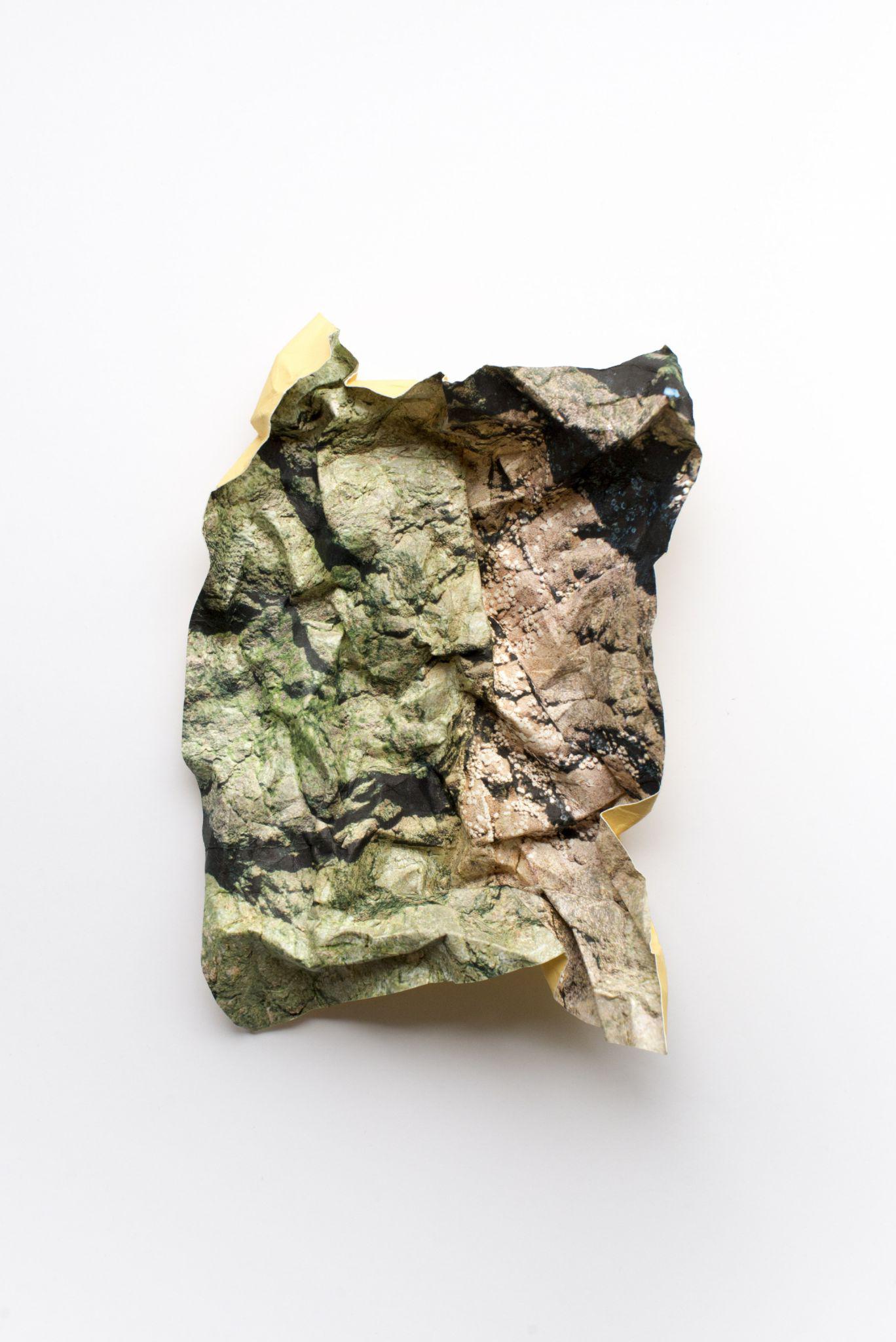
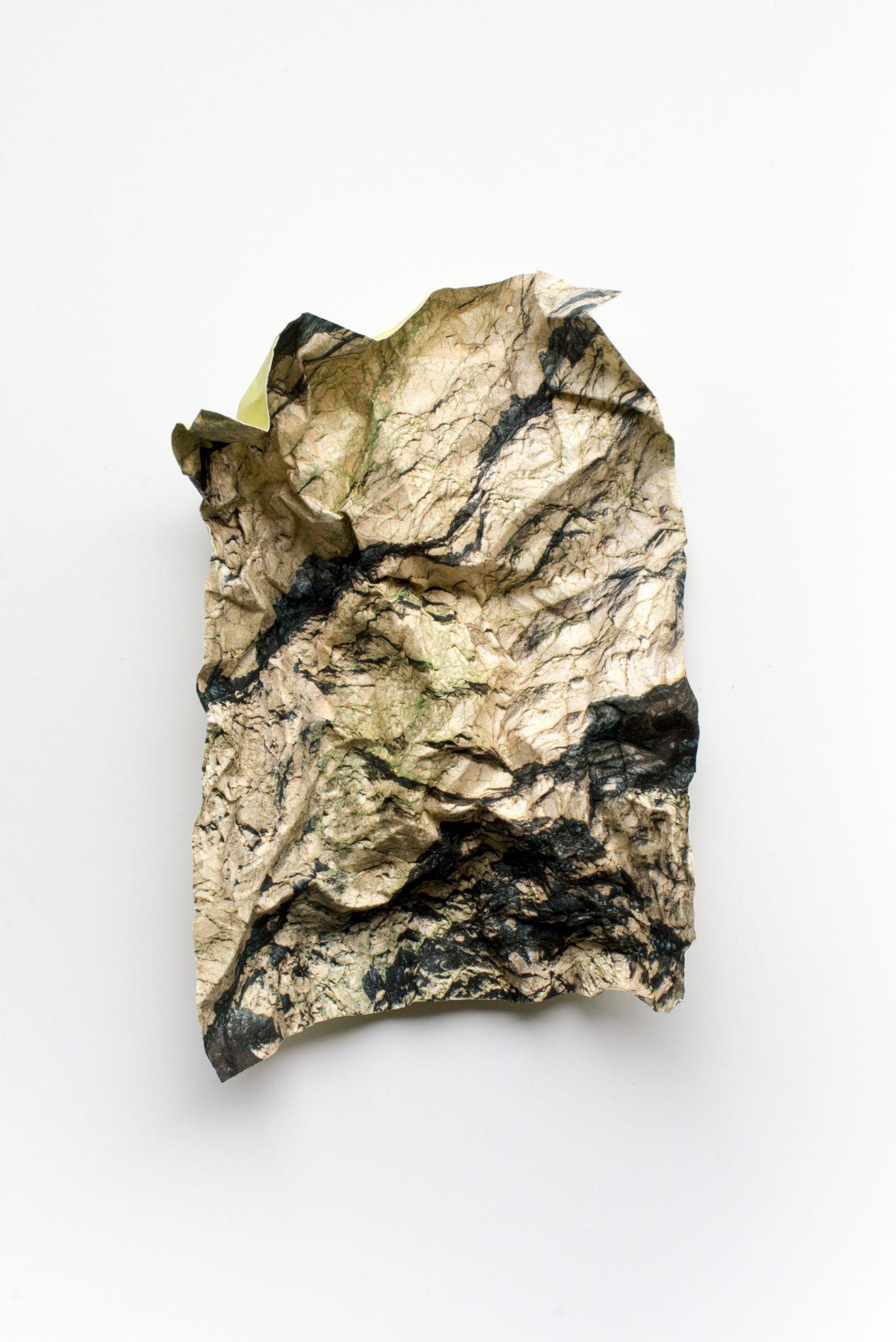
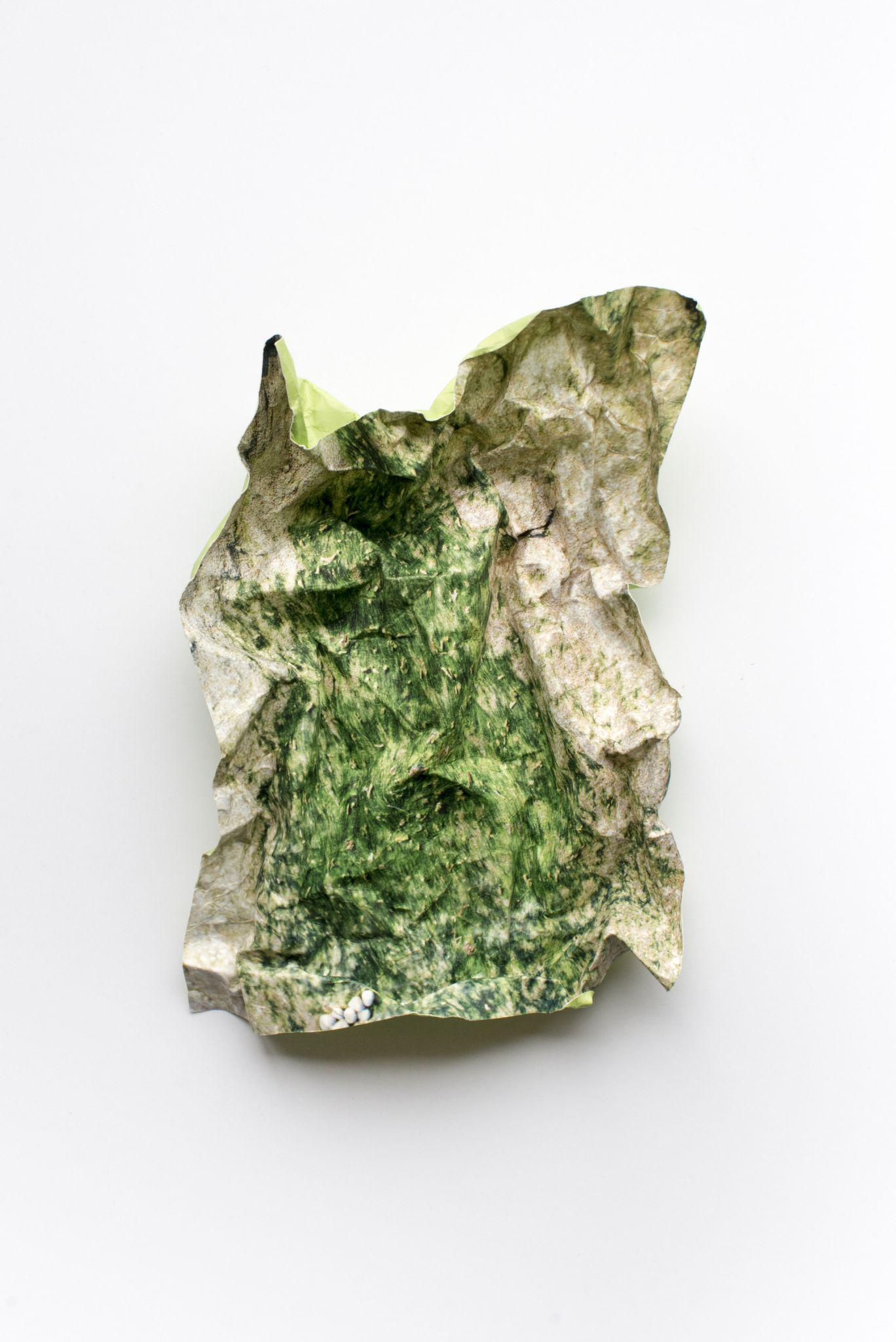
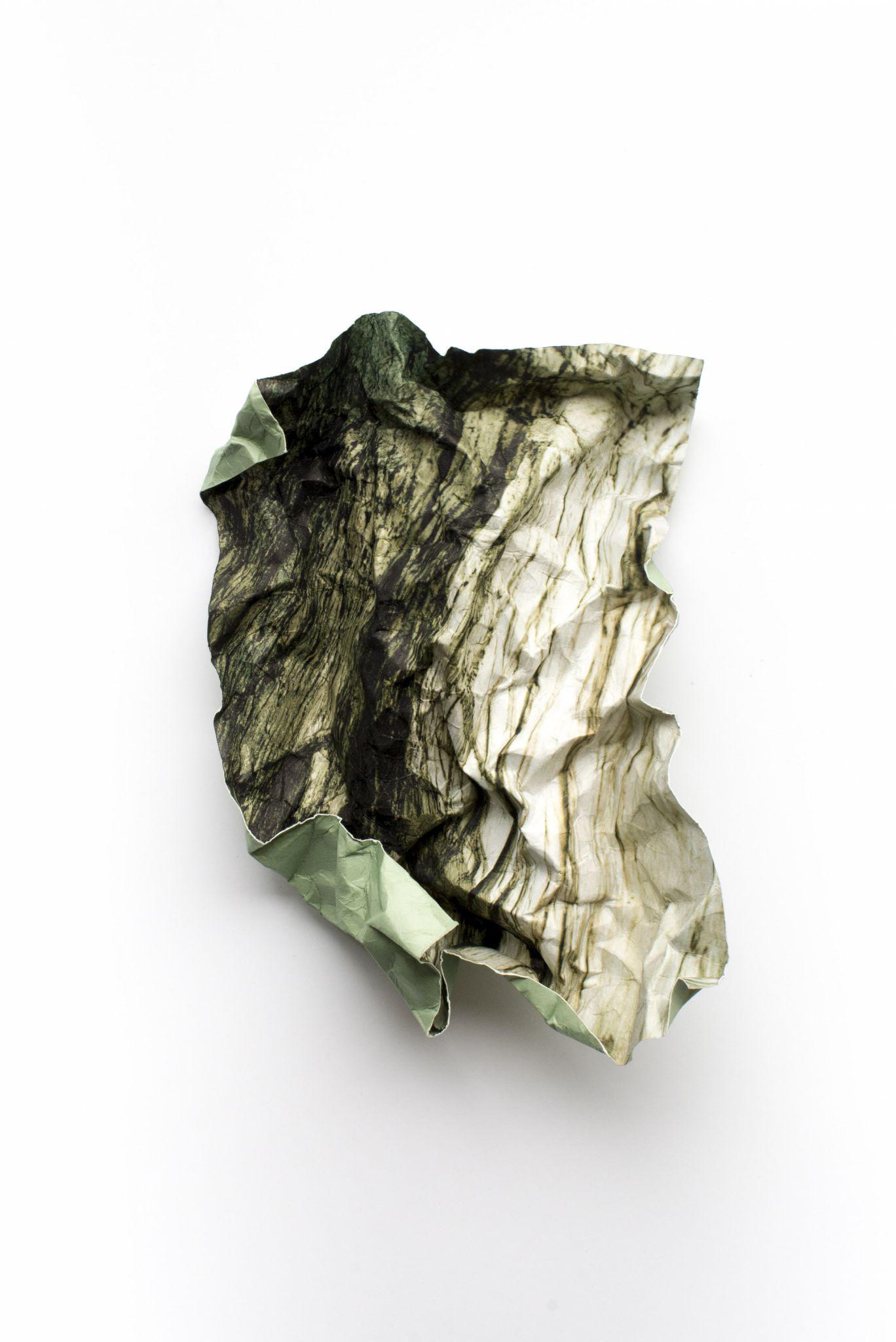
Silica Magazine caught up with the artist on May 13th, 2017 for the opening reception of Land’s End at the Rubber Factory gallery in New York City’s Chinatown. We asked a few questions about his practice, and gathered reactions from gallery-goers about the works.
Q/A ARTIST INTERVIEW*
SILICA MAG / Where did you take the photos for Land’s End? Do the places hold any special significance?
ALEX KWOK / All of these photographs were taken on the edge of the continent, in different spots along the East Coast and the West Coast of North America. The specific places themselves don’t actually hold any significance. I’ll just do a road trip alongside the coast and if I spot something that is visually appealing or aesthetically pleasing — whether that is from prior Google Maps research, or just driving along the highways — I’ll photograph it. It’s more about the geography of things, being on the edge, that’s important, than the specific coordinates.
Can you describe your process?
Back in my studio, I would print [the photographs] out using handmade Japanese rice paper. After I printed them out, I would soak and rinse the photograph in the ocean water that the subject comes from. So for example, if one of the photographs was taken in San Francisco, I would have to order a gallon of Pacific Ocean water to [my studio in] Brooklyn. Then I will crumple it into a ball while it’s still wet, and as it dries it uncrumples itself to the shape you see here. Every time, it’s a surprising effect.
How do you go about ordering ocean water?
It’s actually a very interesting trick. You can order region-specific ocean water in pet shops. You know, because some fish can only live in Pacific Ocean water and things like that.
Did any final outcomes surprise you?
It’s really surprising to see the elements that are being hidden or accentuated just by the nature of the process. These are all unique pieces, so you can never create another one that’s exactly the same, which is part of the beauty of it.
Do you find that there’s a certain character that the North American landscape offers to your work?
I feel like a lot of people want to talk about the geological composition of the different sites, but even though that is very fascinating visually for me, it stops there. For me, it’s much more about finding a spot that has beautiful minerals and rocks, and to reflect that through my process of getting there.
Q/A GALLERY INTERVIEW**
What do these artworks call to mind when you look at them?
1 / It’s so organic. Every piece from start to finish has been created with the purpose of bringing this one place here to New York. It’s super cool and creative.
2 / Knowing what I know about how everything was made, I feel like I’m being transported to another place.
3 / It’s nostalgic for me, almost. When I was growing up, I used to go to Yosemite a lot. It makes me feel like when you’re a kid and you’re first experiencing what it’s like to be in the woods. I feel like I’m looking at something that I know with fresh eyes.
What do you feel your current relationship with the natural world is like right now?
1 / That’s the main complaint of anyone living in the city, right? “I wish I could have more access to nature.” I feel like we live vicariously through the Internet, but also through other’s experiences. For instance, whenever I have a friend who comes back from a trip, like Patagonia or something like that, I’m grilling them about what that experience was like.
2 / I think New York has such a distorted view [of nature] in general. Like, what’s that place on Lafayette? It’s this tiny little square. You go in there, and they say it’s a park, but it’s really just 10 trees, three benches, no grass, and chain-link fences. You sit down there and you’re like ‘Yeah this is a park, this is great, summer!’ but then you go somewhere in the countryside and it’s a totally different experience.
3 / I came from Missouri, so it’s been very backwards for me. I grew up in the woods, and was super-super tight with nature [growing up.] Now, I’m completely separated from it.
How do you feel about the current state of the North American landscape and the future of the environment?
1 / Terrified, mostly (laughs). I mean, everything is up in the air and I’m hoping that there are enough people who are going to fight back to protect our world. But it’s scary to know how many people just don’t care and are cool with ruining it.
2 / It makes me want to go back to school for environmental science. I think a lot of people say “Oh, it’s obvious that global warming is a thing, it’s horrible and it sucks,” but I also think its incumbent on us to be more strict about looking at the science — especially knowing that there are people out there who have [their own] scientific rationale for opposing something that seems really obvious.
3 / I don’t know. On the one hand, I want to be optimistic and say that maybe things like urban farming and [ecofriendly] initiatives they’re doing in places like Singapore could counteract these imbalances, but it’s very much a long-shot at this point. Also, it won’t be nature as we know it. It will be a new kind of nature. Even if we design these systems and plant trees, etcetera, there’s going to be a mimicry happening that will be a little bit weird.
*Interviews have been edited for clarity and length.
**Special thanks to Laurens Spethmann, Mike Tan, Ellise Verheyen, Nicola Dall’Asen and Zoe Henry for contributing with their artistic and environmental musings.
Land’s End will be on display at Rubber Factory (29c Ludlow St. NY, NY) from May 13th to June 21st, 2017.
Answer: Why are the Coasts So Different? (Lifehacker)
Coastal Erosion Study Could Hold Valuable Lessons for Climate Change Mitigation (ScienceDaily)
Finding Connections to Nature in Cities is Key to Healthy Urban Living (University of Washington)
Alex Kwok is a New York City-based artist with a B.A. from Simon Fraser University and an MFA in Photography from Parsons the New School for Design. He is represented by Rubber Factory. More of his work can be found at alex-kwok.com.